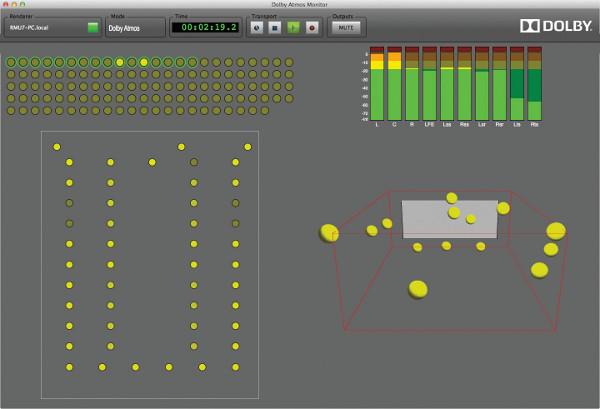Atmos at Home Is Huge

Back in June, Rob Sabin described the launch of Dolby Atmos for home theaters and provided his first listening impressions . Rob commented that Atmos is the “most discernible advance in home theater sound since the introduction of lossless digital audio in the Dolby TrueHD and DTS-HD Master Audio formats on Blu-ray.” Maybe I’ve drunk too much Dolby Kool-Aid, but I would go even further. I think Dolby Atmos for home theaters is the biggest thing in home theater audio since 5.1 itself. In other words, I think Atmos at home is huge.
I won’t go into the technical aspects of Atmos here. But briefly, Atmos, at least in theaters, allows a seemingly unlimited number of audio objects to be mixed and played back by to up to 64 loudspeakers. Few homes (or spouses) would support 64 speakers, but a 7.1.4 or even 5.1.2 (four or two Atmos-enabled speakers, respectively) should be enough to convince listeners of the benefits of Atmos, particularly if the new speakers are placed overhead. Moreover, there is a sufficient back catalog (more than 100 titles) of Atmos movies to kick-start Blu-ray and streaming Atmos releases.
I’ve heard Atmos in theaters plenty of times, and it rocks. Atmos gives sound designers entirely new tools and spatial possibilities to work with. For Oblivion, for example, when the bubble plane makes its approach and circles overhead, you really do hear the turbine whining overhead. Likewise, effects like rain on a roof are properly placed above you. When you hear effects such as thunder rumbling over and around you, the roar of a ghostly crowd in a ruined stadium fading away behind you, and the cavernous reverberation in a subterranean library, you are exactly there—in those acoustic environments. Surround mixes have always promised to do that, but with Atmos, mixes can really deliver on the promise.
Atmos also opens the creative doors of music playback. Atmos movie scores can provide amazing immersion, painting expansive music stages like you’ve never heard before. Individual instruments can be sprinkled all around and placed precisely throughout the listener’s speaker constellation. The effect is wonderful. Will music producers embrace Atmos and begin mixing albums in the format? I sure hope so. With Atmos, they can mix music with more precise surround, and when played back with ceiling speakers, the height cues greatly enhance the realism of the surround. I would kill to hear classical orchestral music or opera recorded in the Atmos format.
Here’s another reason why Atmos at home is huge: I listened to the SRS Labs demo of its scalable, object-oriented Multi-Dimensional Audio system numerous times and spoke extensively with SRS’ chief technology officer, Alan Kramer, who spearheaded its development. Each time I heard it, I was blown away. I regarded it as The Next Big Thing in home playback. SRS is no more, but DTS owns that intellectual property. With Dolby rolling out Atmos at home, surely DTS will bring its version to market. And that means competition. Competition is good. Where would Samsung be without Apple? You get the picture.
Will Atmos at home cause mass-market consumers to throw away their phones and instead crave new receivers and speakers? No. Will Atmos at home signal a renaissance in home theater sound? Maybe. Will it get us home theater enthusiasts jazzed about playback again? You bet it will. Atmos at home is huge.
























































